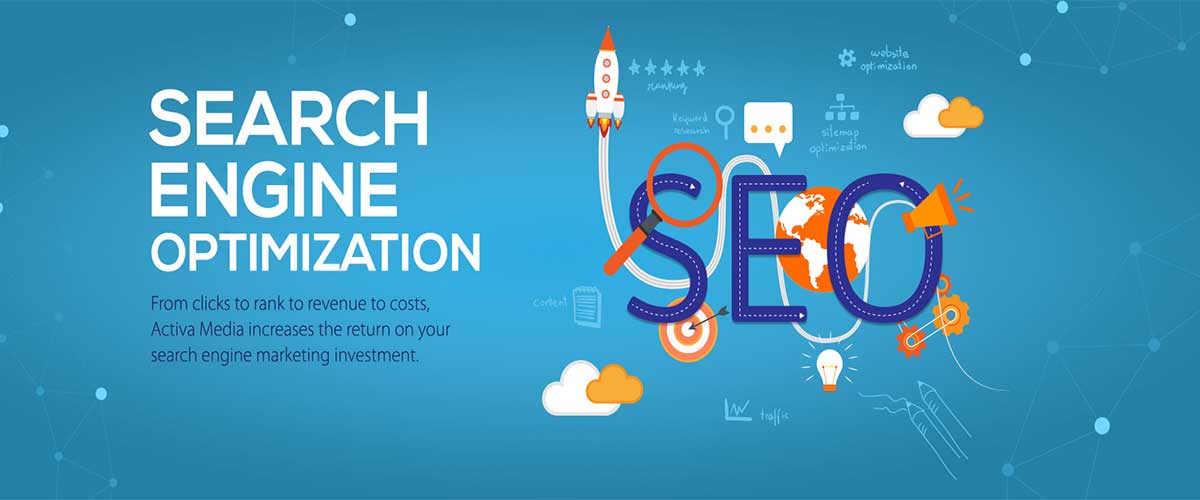You’ve likely heard of SEO, but do you know what it actually is? SEO stands for “search engine optimization.” It’s a digital marketing strategy that helps people find your website when they use search engines like Google.
When someone types a word or phrase into a search engine, that engine scours the internet for websites that match the searcher’s query. The search engine then ranks those websites in order, from most to least relevant. The higher your website appears on the list of results, the more traffic you’re likely to get.
What is SEO?
SEO is short form for “Search engine optimization”. It is a long-term marketing strategy employed in order to improve a websites visibility and organic search results in google and other global search engines. It is achieved by optimizing the website content, structure and on-page elements like titles, descriptions, keywords etc. as well as developing off-page SEO tactics like link building, social media engagement etc.
SEO can be complex and time-consuming, but it is worth it because it can help you attract more visitors to your website, improve your conversion rate and ultimately boost your bottom line.
If you want to learn more about SEO, be sure to check out our blog for all the latest tips and tricks.
The Different Types of SEO
SEO Packages, or search engine optimization, is the process of improving the visibility and ranking of a website or web page in search engine results pages (SERPs). There are different types of SEO, each with its own advantages and disadvantages.
Black hat SEO refers to practices that are used to get a website to rank higher in search engine results pages, but which go against the guidelines set by the search engines. These practices can get a website banned from the search engines entirely. Some examples of black hat SEO include keyword stuffing, invisible text, and doorway pages.
White hat SEO, on the other hand, refers to practices that are in line with the guidelines set by the search engines. These practices improve the visibility and ranking of a website in SERPs without breaking any rules. Some examples of white hat SEO include optimizing titles and meta tags, creating quality content, and building links naturally.
Gray hat SEO is a mix of black hat and white hat techniques. Gray hat SEO is not necessarily bad, but it can be risky. Techniques that fall into this category include link buying, link farms, and keyword stuffing.
Which type of SEO you choose will depend on your goals and your risk tolerance. If you want
Pros and Cons of SEO
SEO is a process that can be used to improve the visibility of a website in search engine results pages (SERPs). The main aim of SEO is to improve the ranking of a website so that it appears higher in the list of results returned by a search engine.
There are both pros and cons to using SEO to improve the visibility of your website. Some of the advantages include:
-Increased traffic: If your website ranks higher in SERPs, you are likely to see an increase in the number of visitors to your site.
-Better brand awareness: Higher rankings in SERPs can lead to improved brand awareness and name recognition.
-Increased sales and leads: If your website receives more traffic, this can lead to increased sales and leads.
-Improved user experience: By improving your website’s ranking, you can also improve the overall user experience for visitors to your site. This can lead to repeat visitors and improved customer loyalty.
However, there are also some disadvantages to using SEO, including:
-It takes time: SEO is not a quick fix solution; it can take weeks or even months to see results from your efforts.
-It requires ongoing work: Once you achieve
What Is Included in an SEO Campaign?
An SEO campaign can include many different elements, but there are some commonalities that are usually included. Here are a few of the most important things that should be part of any SEO campaign:
1. Keyword research – In order to identify the best keywords to target for your website, you’ll need to do some research. This involves looking at the search volume and competition for various keywords, and then selecting the ones that will be most effective for your site.
2. On-page optimization – Once you’ve identified your target keywords, you’ll need to optimize your website for those keywords. This includes things like making sure your title tags and meta descriptions are optimized, as well as ensuring that your content includes the keywords you’re targeting.
3. Link building – In order for your website to rank higher in the search engines, you’ll need to build links back to your site. This can be done through things like guest blogging, directories, and social media.
4. Tracking & reporting – It’s important to track your progress and results over time so that you can adjust your campaign accordingly. You should also report on your progress regularly so that your clients or boss can see how well you’re doing.
How Much Does SEO Cost?
If you’re running a business, you’re always looking for ways to get ahead of your competition. Search Engine Optimization, or “SEO” for short, is one way to do that. But what is SEO? How much does it cost? Let’s take a look.
SEO is the process of optimizing a website for Google search with the goal of earning higher web traffic levels and improving the visibility of the site.
The cost of SEO can vary depending on the size of your business and your goals. If you’re just starting out, you may be able to do some basic optimization yourself. However, if you’re serious about getting results, it’s best to hire an experienced SEO professional. Prices can range from $500 to $5,000 per month, or more.
No matter what your budget is, there are ways to make SEO work for you. The important thing is to do your research and find a reputable company or consultant that can help you achieve your goals.
Conclusion
SEO is a process that helps improve the visibility of a website in search engines. By optimizing the website for relevant keywords, businesses can attract more visitors who are looking for what they offer. SEO can be complex, but there are many resources available to help business owners understand and implement it successfully. When done correctly, SEO can be a powerful tool for driving traffic and growing a business.

